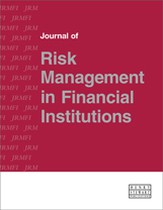Expected loss provisioning under upcoming IFRS 9 Impairment Standards: A new source of P&L volatility — can we tame it?
Abstract
With the introduction of the final International Financial Reporting Standard (IFRS 9)4 for credit risk provisioning in July 2014 and its expected application, starting in 2018, provisioning levels as well as the dynamics of ongoing credit risk expenses are expected to change significantly. The changes to cost of risk are already starting to concern business leaders, Chief Risk Officers and Chief Financial Officers. Significantly extended outlook periods of provisioning models, the need to provide point-in-time forward-looking estimates, accompanied by judgmental elements inherent in a generally ‘principles based’ approach, and new modelling techniques required to perform these estimations contribute to this increase in potential uncertainty. This paper outlines the main challenges under the IFRS 9 Impairment Standard, building on concepts known from the Basel II and III A/F-IRB (Advanced/Foundation – Internal Ratings Based) approach for regulatory capital.7 The most relevant ongoing issues will be the higher volatility and additional complexity of the Profit and Loss (P&L) effect of credit risk. This paper builds on the framework ‘Impact of Risk’, as introduced by the author in 20131 as an objective measure for actual credit risk in line with A/F-IRB standards, to cover IFRS 9 provisioning and to provide a separation of cost of risk into its main components. To further bridge the gap towards an economic value, the benchmark iACV© is introduced on the basis of an amortised cost concept, while fully recognising expected lifetime losses. This latter concept will prove useful for calibration of the IFRS 9 asset value and the ability to compare it objectively among different portfolios or jurisdictions.
The full article is available to subscribers to the journal.
Author's Biography
Wolfgang Reitgruber is responsible for the development of credit risk methods at UniCredit SpA, as well as related model governance topics. Since 2012 he has also worked as an independent researcher in the area of credit-risk-related methods on the basis of regulatory and accounting standards. He introduced the EL back test,1–3 participates in the European Banking Federation (EBF) taskforce on ‘prudential treatment of expected losses’ and works on extending the Impact of Risk© framework to support life-time loss modelling for IFRS 9.
Citation
Reitgruber, Wolfgang (2016, October 1). Expected loss provisioning under upcoming IFRS 9 Impairment Standards: A new source of P&L volatility — can we tame it?. In the Journal of Risk Management in Financial Institutions, Volume 9, Issue 4. https://doi.org/10.69554/AICW6338.Publications LLP
